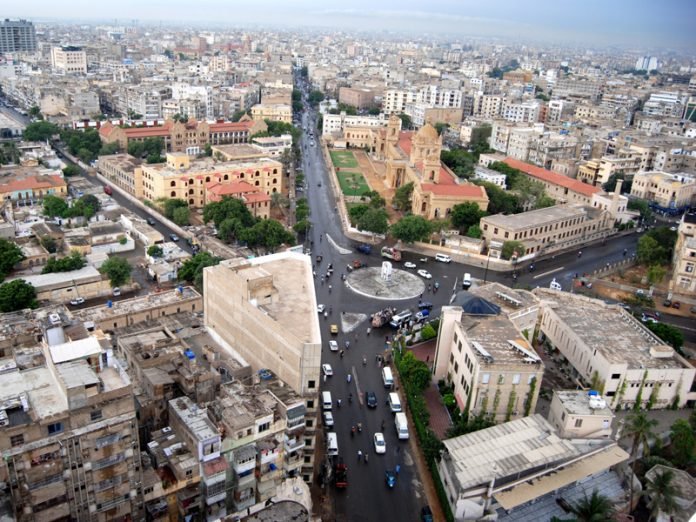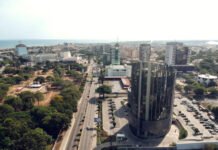Last Updated on March 30, 2024 by Umer Malik
China-Pakistan Economic Corridor (CPEC) is one of the major projects that has started between Pakistan and China. The CPEC project overall has many implications on the society of Pakistan. The friendship between China and Pakistan is based on decades of success, and taking this successful friendship to the next phase both the countries have decided on the CPEC project. This project is not only beneficial to both the countries, this project also strengthens the bond between the two counties. The CPEC Project aims to connect Gwadar Port in Baluchistan, Pakistan to Xinjiang in China. CPEC has a positive impact on many sectors of Pakistan, and one such sector is the Real Estate sector of Pakistan.
Table of Contents
What Is The CPEC Project?
Before getting into it, we first need to establish what exactly the CPEC Project is. The China-Pakistan Economic Project (CPEC) is a collective project for many infrastructural developments throughout Pakistan. This project was inaugurated and started in the year 2013, almost 10 years ago. This project is targeted to strengthen the infrastructure of Pakistan by developing roadways, railway lines, energy projects, and economic zones. CPEC project is established to prosper the infrastructure of Pakistan, while providing a seaport trading route to China for Africa and West Asia. One of the biggest development under the CPEC project is the Motorway, National Highway, and Gwadar Port.
CPEC Route
One of the major development to take place under the CPEC project are the roadways that are developing. There are multiple CPEC Route projects underway with the CPEC agreement. These CPEC route projects include:
Karakoram Highway Project
The Karakoram Highway is 890 kilometer road between the boarders of Pakistan and China, passing through Burhan and Hasan Abdal. Under the CPEC project, this highway will be reconstructed with added upgrades to the route. The city of Burhan plays a very important role in the development of this phase 1 of Karakoram Highway project. At the city of Burhan the M1 Motorway and N35 Highway will intersect at Shah Maqsood Interchange. This will also grant an access to M2 Islamabad-Lahore Motorway. Along with this Burhan will also be intersected by the Western Alignment Project and Eastern Alignment Project. This makes Burhan a very important intersecting point for the CPEC route projects.
The phase 2 of Karakoram Highway project will upgrade and develop a 490 kilometer route between Burhan and Raikot. Another route under the Karakoram Highway Project is the 355 kilometer highway between Shinkiari and Riakot. Another project is 60 kilometer long highway between Burhan and Haveli. Whereas, a 70 kilometer road is being reconstructed and developed between Haveli and Shinkiari. This brings the Karakoram Highway Project to a full circle.
Eastern Alignment Project
The next is the Easter Alignment Project that is developing a Motorway. This project is to develop roadways between the provinces of Sindh and Punjab. For this project a 1,155 kilometer long motorway is developing between the two major cities of Pakistan, Karachi and Lahore. This Eastern Alignment Project will develop 4 major Motorways named as M9 Motorway.
The first one is between the cities of Karachi and Hyderabad, which is going to be 140 kilometer long. The second one is between the cities of Hyderabad and Sukkur, which is going to be 345 kilometer long. The third one is between the cities of Sukkur and Multan, which is going to be 390 kilometer long. The fourth one is between the cities of Multan and Lahore, intersecting the city of Abdul Hakeem, which is going to be 333 kilometer long. This brings the Eastern Alignment Project to a full circle, named as the M9 Motorway.
Western Alignment Project
The next part is the Western Alignment Project, which is connected to both the Eastern Alignment Project and Karakoram Highway Project. This CPEC route is being constructed to connect the provinces of Baluchistan, Khyber Pakhtunkhwa, and Punjab. The project will develop 870 kilometer route within the province of Baluchistan.
This project starts in the province of Punjab, in the city of Burhan, at the Karakoram Highway Project. The interchange for the Western Alignment begins at M1 Motorway, where it will connect to 290 kilometer long Brahma Bahtar-Yarik Motorway. This motorway ends in Khyber Pakhtunkhwa at the city of Dera Ismail Khan. At the end of the motorway the Western Alignment Project will develop N50 National Highway between the cities of Dera Islmail Khan, Khyber Pakhtunkhwa, and Zhob & Quetta, Baluchistan. A route of N25 National Highway will be developed between the cities of Quetta and Surab. Between the cities of Surab and Hoshab a 470 kilometer N85 National Highway will be developed. Finally, between the cities of Hosab and Gwadar M8 Motorway is developing, which is 195 kilometer long. This brings the Western Alignment Project to a full circle, developing Motorways and National Highways.
Central Alignment Project
The Central Alignment Project falls under the long term planning of the CPEC routes, where this project will start at the city of Gwadar and end at the city of Dera Ismail Khan. This project will intersect many cities of Pakistan including Muzaffagharh, Rajanpur, Khuzdar, Basima, Sukkur, and Layyah. The Central Alignment Project will end up connecting to the Karakoram Highway Project. This brings the Central Alignment Project to a full circle.
Real Estate Projects Along The CPEC Route
The CPEC Route stretches along the complete length of Pakistan, forming multiple Motorways and National Highways. There are many housing societies throughout Pakistan that will take advantage of the roads and routes developed under CPEC. With this there are housing projects developing under the CPEC as well, or using the name of CPEC as they are developing along the CPEC Route. To name a few some are:
- Royal CPEC City
- CPEC Valley Housing Scheme
- Islamabad Garden CPEC Route
- Nova City Islamabad
- Capital Smart City Islamabad
- Platinum Seaview Gwadar
- Blue World City Islamabad
- International Port City
- China Pakistan Golf Estate
Not only these, but throughout Pakistan, along the CPEC routes many housing societies will develop. This is because the CPEC route will provide them with access points and connections to wide carpeted roads. CPEC route makes above s societies more demanding compete able like Park view city, and Avalon city Islamabad,
Impact of CPEC Routes on Pakistan’s Real Estate Industry
The impacts that the CPEC Project will have on the real estate sector of Pakistan is quite large. The overall impact that the CPEC Routes will have on the real estate industry of Pakistan will be positive, giving a boom to many projects throughout the country. The economic growth and growth in the real estate industry is directly connected to the development of CPEC Routes. A spike in the prices has been seen in the real estate industry, ever since the inauguration of CPEC project. Many housing societies are taking advantage from the CPEC Routes. Mainly because areas that were remote previously remote and valued less in the real estate market, have now increased in value and prices. These areas are no longer considered remote because they can be easily accessed via the CPEC Routes. This new trend has also increased the number of real estate projects throughout Pakistan. Investor in Pakistan and overseas investors, both are looking forward to investing in projects that are connected or easily accessible through the CPEC Routes. This overall trend shows nothing but a boom in the real estate market overall. With CPEC Project still developing, we can see a bigger boom in the real estate market, whereas this boom will be growing persistently with the persistent growth of the CPEC Routes.





















